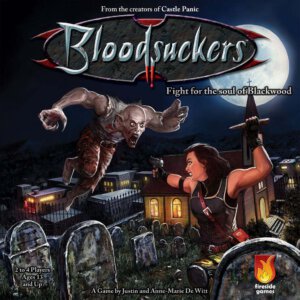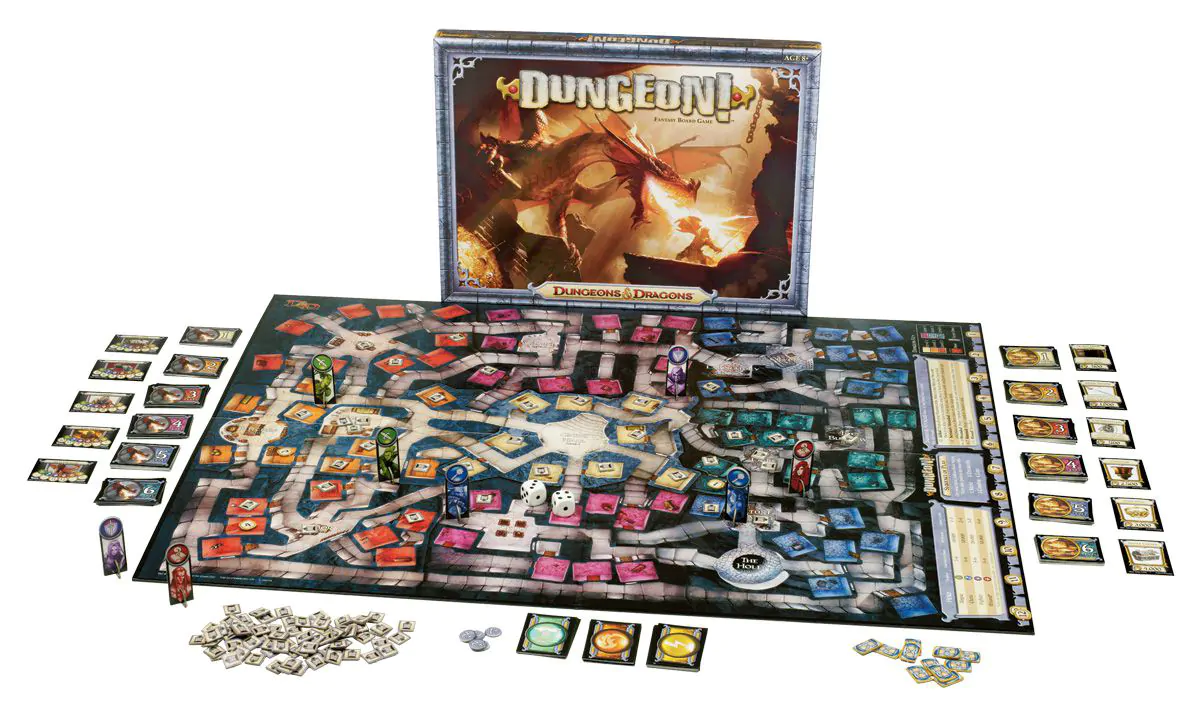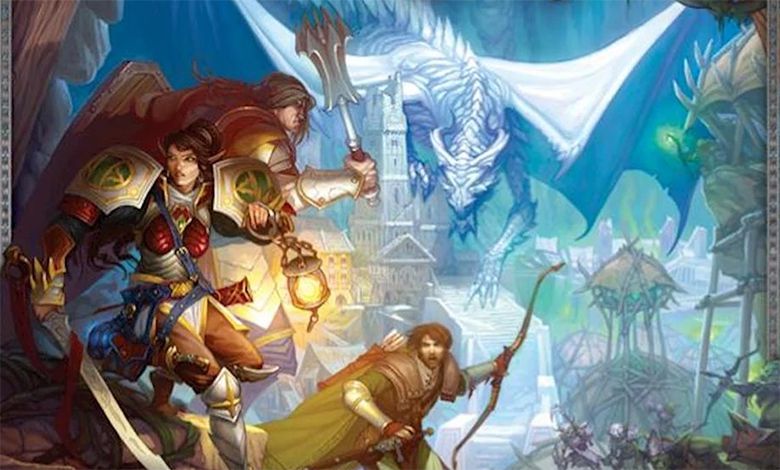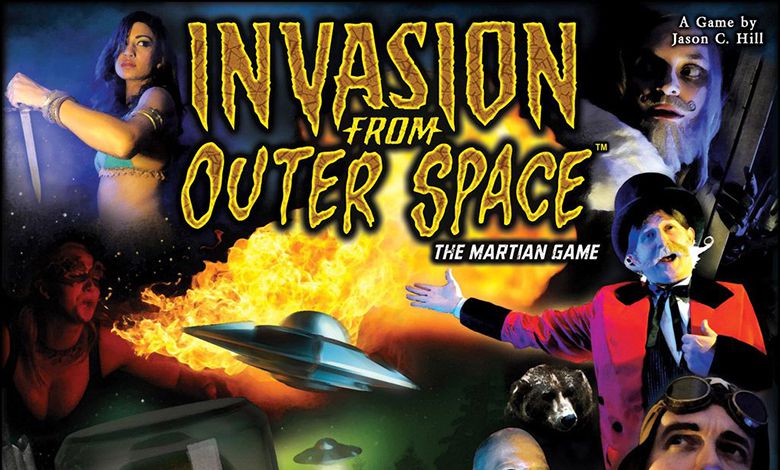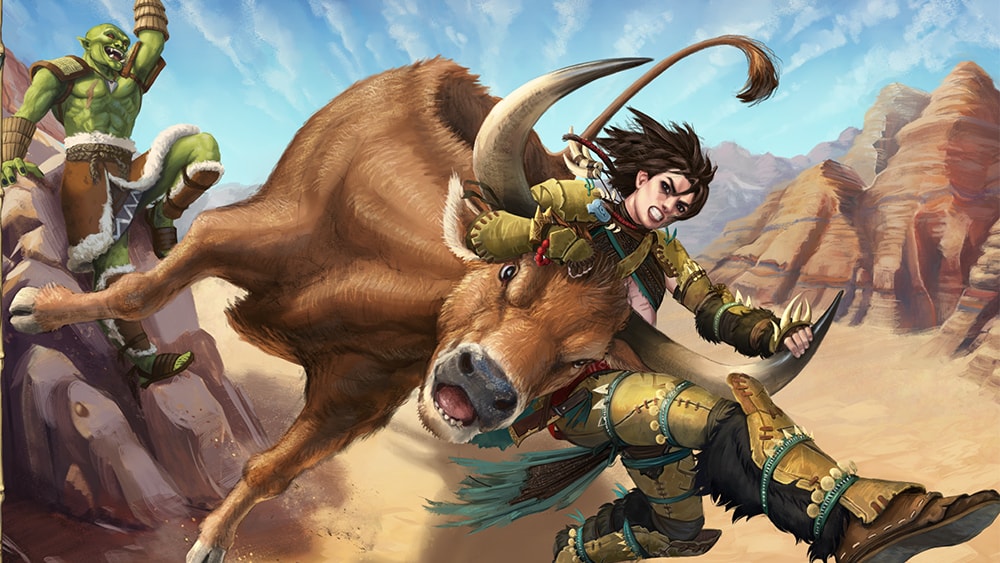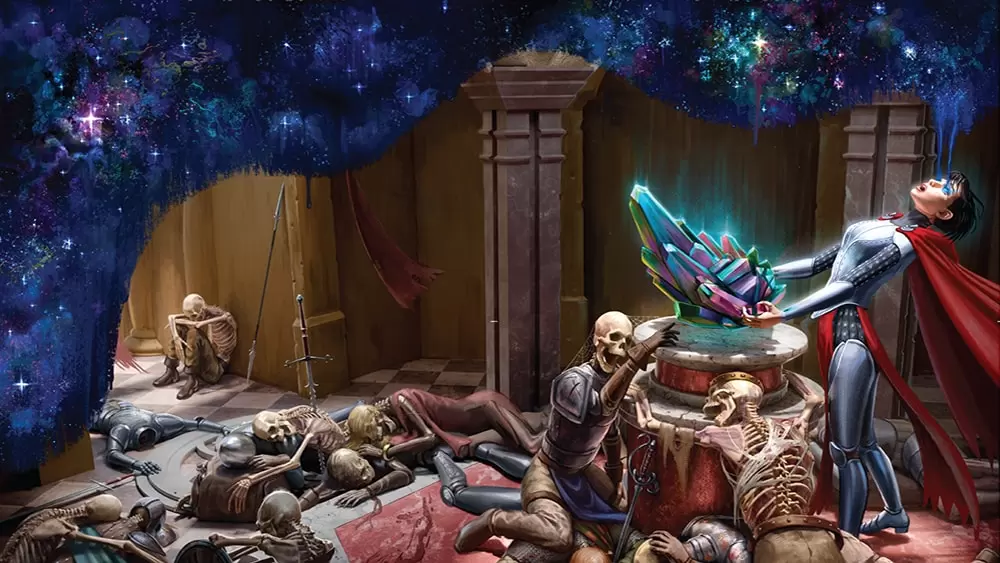Publisher: Fireside Games
Designer: Justin and Anne-Marie De Witt
Artist: Yoann Boissonnet
Year: 2011
Players: Two to four players
Ages: 13+
Playing Time: 60 Minutes
Genre: Area control, hand management horror game
Retail Price: $39.95
Bloodsuckers is the newest release from Fireside Games, publishers of Castle Panic. In essence, it is a card game with many accoutrements to enhance the experience and aid in game play. In Bloodsuckers, you will play as either the Vampires or the Hunters, and face off against each other in a series of battles. The player who wins the most battles, wins the game.
The components are top notch. Full color glossy cards and rules, a standup board with all of the dials you need to track the progress of the game, small yellow crystals for adrenaline tokens, red glass beads for blood tokens, and player’s aid cards. I would have preferred a game board to the included player’s mat, but I suspect that this is one of the reasons that the price point is so reasonable. The mat is nice and since it is flat you won’t have cards lying at an angle on the edge as you would if there was a game board, so I think it was the right choice.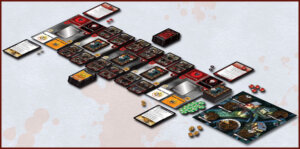
Bloodsuckers is definitely one of the most unique game systems that I have played. The character cards are impressive and multi-functional. Each card has two pictures on one side of the card, showing each character as either a vampire or a hunter. You simply rotate the card 180 degrees so that the correct type is showing (vampire or hunter). Additionally, the reverse side of the card is the bystander side. These bystander cards will be played across the board when you go to a location, and the winner of that section of the battle will win that bystander card, who then becomes a new character in the player’s force.
The bystander card also has a combat track on the back, where each player puts their tokens to measure the force of their current battle over that particular bystander. I’ll explain it better in a bit, but I just wanted to point out how many functions these cards serve, without being complicated in any way. One more note, each character has a special ability, which is also shown on the bystander side, so if you want to get characters with that ability you can concentrate your forces on that particular bystander.
To start with, each player picks a side, either vampires or hunters. The sweet spot for the game is two players, followed by four, and finally three. The three player game has the most rule variations, so I don’t recommend it for your first game. The game is fun regardless, and believe it or not will take the same amount of time regardless of the number of players.
Cooperation between teammates is encouraged and essential. In a four player game each player will only get two turns to try to win a battle for their side. There are rules for trading cards between teammates and specific 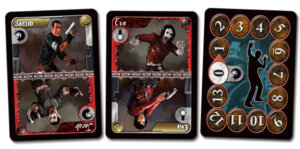
Each player receives their initial characters by drawing them from the character deck, and a hand of combat cards, tokens, and a player’s aid card. The players decide how many locations they will be fighting over in this game, and you vary the game length depending on the number you select. You can have a max of five locations, but if you are in the mood for a shorter game, then you can go with three if you all agree.
The stand-up board has dials representing each location where the battles will be fought (the hospital, graveyard, police station etc). Rotate the dial to the Bystander position and this shows you how many bystanders are in that location. For example, the police station has three bystanders according to the dial. You draw three character cards and place them on the player mat in any of the three center bystander spots with the bystander side face up. These represent the people that you are fighting over during the battle at the police station.
The first player team, determined by a die roll for the first battle, selects the location of the first battle and the time of day. The vampires will want to start at night while the hunters begin in the daytime. There is a time dial on the standup to keep track of the time of day. That team places their characters in the sections on the board containing bystanders, to show who will be fighting to control that particular bystander. The other team then places their characters opposing the first team, and the battle is ready to begin.
The time dial actually tells you which player’s turn it is based on its current setting. During a turn, a player will first perform three actions, which can be playing a combat card, drawing a new combat card, moving characters to different sections, playing a blood or adrenaline token, and so on. You can even bank up to two actions, for use later in the game.
Playing combat cards is the crux of the game. When you play a combat card you are having one of your 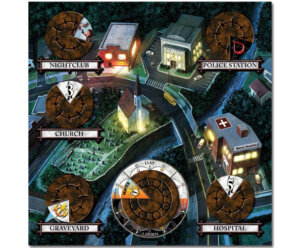
Attacks are not cumulative however. If I launch another attack on the same bystander on my next turn using a Molotov cocktail with a strength of two, my token moves down to the two spot on the track. The Molotov cocktail has the added power to reduce an opponent’s attack to zero though, so I would move their token on the five spot back to zero, and I would again be winning the battle for that bystander with a score of 2-0.
There are different combat decks for each team, so the hunters won’t be biting, and the vampires won’t be using shotguns. It is possible for a vampire to turn a hunter into one of the undead and thus join their side, but the hunters counter this by being able to stake a nasty vamp on occasion.
After taking your actions, you can discard and draw new combat cards up to your max hand size, and then you can untap any of your characters that have been previously stunned. A stunned character can’t perform any actions, and you show this by rotating them 90 degrees. Finally, you rotate the time dial one section over and it is the next players turn.
Once the time dial has made a complete revolution over the eight spots on it, the battle is over. Each player looks at the locations of their tokens on the back of the bystander cards. The player with the highest attack total on each card wins that card, and that bystander joins their side as a character (ties are a draw and no one wins). The team that wins the most bystander cards in that battle with that location and rotates the dial on the standup to either the vampire or hunter symbol to show which player controls that location. In the event of a tie, the location becomes locked and no one is in control.
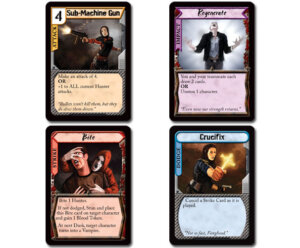
The team that controls the fewest locations gets to select the next location from the remaining ones on the standup, and they get to go first, so they also select the time of day. Another battle begins and this continues until all locations on the standup are resolved.
Whichever team won the most locations, wins the game. If they are tied, then the team with the most characters wins the game. If they are still ties you go into a sudden death round to determine the winner.
One note on blood and adrenaline tokens, you can win these during the game by destroying one of the opposing player’s characters. A blood token will add +2 to all of one of your character’s attacks during the current battle, while an adrenaline token gives the hunter player an extra action each turn when played on a character.
My mistake was playing a three player game first. When the dial got to Player two for the hunters, I didn’t know whether or not I was supposed to take all of the hunter’s turns, or just skip the sections on the dial that show hunter player two. This wasn’t made clear in the rules. I opted for taking all of the hunter’s turns on the dial, as it made the most sense. The vampire players get a total of four turns during a battle, so it made sense that I would too.
Also, if you are playing a three battle game and lose the first two battles, then there is no point in playing the third battle because the game is already lost. It is the same with five battles if you lose the first three. The rules don’t say anything about this, but we just would end the game and start a new one if this happened.
The game can lead to some analysis paralysis, especially when you realize that this is your last turn during the current battle, and you need to plan out how to put yourself in the best position to win the most bystander cards. The game is so quick though that this really isn’t that big of a problem. This is where the strategy comes in and a well played turn can really pay off.
This is a game that you really need to play to get a feel for it. It is different, and it is a lot of fun. After multiple plays I am still trying out different strategies which really do change depending on the number of players. It is thematic and challenging, and I liked it a lot.
- A Dungeon Delve for Kids?: A Review of Dungeon! - Oct 24, 2022
- Better, Stronger, Faster | Descent: Journeys in the Dark Second Edition Reviewed - Oct 23, 2022
- Your Planet is Doomed!: Invasion from Outer Space Reviewed - Oct 22, 2022


